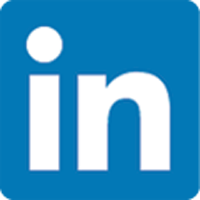
The Smart Healthcare Revolution – What Does it Mean for Patent Attorneys?
By Alex Burns, Mewburn Ellis
In 2020 the EPO published a report on the global trends in patent applications for “Fourth Industrial Revolution” (4IR) technology, such as machine-learning, artificial intelligence, and the Internet of Things. The headline of that report was the meteoric rise in patent application in all fields of 4IR technology.
One of the fields which the report identified was “smart healthcare”, which accounted for around 12% of all applications falling under the 4IR umbrella in 2018. Smart healthcare can range from robot-assisted surgery to medical image analysis, and from using machine-learning for drug discovery to computer-aided diagnosis. In the US, Boston, Washington and Minneapolis stood out in particular as areas in which patent applications directed towards smart healthcare originated.
A deep dive into the data
As a data-driven team we were keen to undertake our own research into this area so in August this year, we released our Patent Landscape in Bioinformatics and Digital Health Special Report. We set out to collect data on the patent landscape in the fields of bioinformatics and digital health, to see whether the growth we see in our practice is reflected in the data and whether insights can be gained that will assist in designing better, more informed IP strategies. Our research analysed publicly available patent publication data over the last 10 years in a selection of Cooperative Patent Classification (CPC) categories.
Our research shows that there has been a significant increase in the number of patent publications in fields which are overtly associated with smart healthcare, such as bioinformatics, digital health, computer-assisted diagnosis/therapy, and medical image analysis. However, in addition to these fields, the EPO report identified large numbers of smart healthcare applications focusing on or including aspects of connectivity (13.0%), data management (27.2%), and 3D systems (9.6%) – three areas which, traditionally, would never have been associated with the healthcare sector. In virtually all of the fields considered, the number of filings have been dominated by US and Chinese applicants.
A data-driven future
The data from our research and the EPO report shows us that not only are life sciences companies moving towards a digital and data-driven future, but companies such as IBM, Philips, and Sony, which have typically been regarded as electronics or software companies are also embracing the power of developments in 4IR technology and focusing their own attentions on the smart healthcare space.
What does this mean for patent attorneys?
From the above, it is clear that the boundary between “traditional” life sciences and “traditional” computing are eroding at an astonishing rate. This has given rise to a significant uptick in applications which straddle this boundary. As a result, patent attorneys will need to follow suit, and be prepared to familiarize themselves with subject-matter which, previously, they may have passed swiftly to a colleague.
Firms will also need to be prepared to offer multidisciplinary teams who are well-equipped to deal with inventions directed towards technology in the newly emerging space between life sciences and computing. In addition to having to deal with new types of invention, it appears that patent attorneys will also need to prepare for an increase in the number of patent applications which are filed, as well as a likely increase in freedom-to-operate style work as more and more players enter the field.
Patent attorneys (especially those specializing in the computing/software field) will also need to adapt their style of drafting. Where an invention employs some kind of artificial intelligence or machine-learning to achieve, for example, a clinically meaningful technical effect, it is unlikely that assertions of non-obviousness or inventive step will continue to be sufficient in the absence of detailed supporting data and other experimental evidence. This is especially true in clinical contexts where the improvement in e.g. diagnostic accuracy is not apparent merely from the steps of an algorithm itself. We should therefore not shy away from pushing applicants to provide us with as much experimental data as possible, and from reviewing, understanding, and explaining this data when writing a patent application. This is standard practice for attorneys specializing in the chemical or life sciences fields but will likely represent a learning curve for attorneys whose work traditionally lay outside these fields.
Patent offices all over the world will also need to adapt to the changing landscape. At the EPO, we have already seen the creation of bespoke examining divisions (equivalent to the USPTO’s art units) in fields such as bioinformatics and healthcare informatics, including examiners with expertise in inventions in these technical fields. As more and more specialized examiners are hired, the popular tactic of sculpting a patent application during the drafting stage to be directed towards a particular examining division or art unit, which is known to be more lenient, may become less and less effective.
In conclusion, there is no arguing that these technological developments are exciting news for patent attorneys and applicants alike, but patent attorneys will need to learn to adapt to these new technologies and the challenges they will bring!
Alex Burns, Senior Associate, Mewburn Ellis
Alex works on all aspects of the patent application process, with a particular focus on Fourth Industrial Revolution technology (including artificial intelligence, machine learning, the Internet of Things and more) and its application to healthcare and bioinformatics. He has particular experience drafting and prosecuting applications in these fields, with a focus on arguing in favour of the patentability of computer-implemented inventions at the EPO and UKIPO. In addition to drafting and prosecution work, he also has experience in handling oppositions (both offensive and defensive) and appeals at the EPO in the field of medical devices and related technology.














